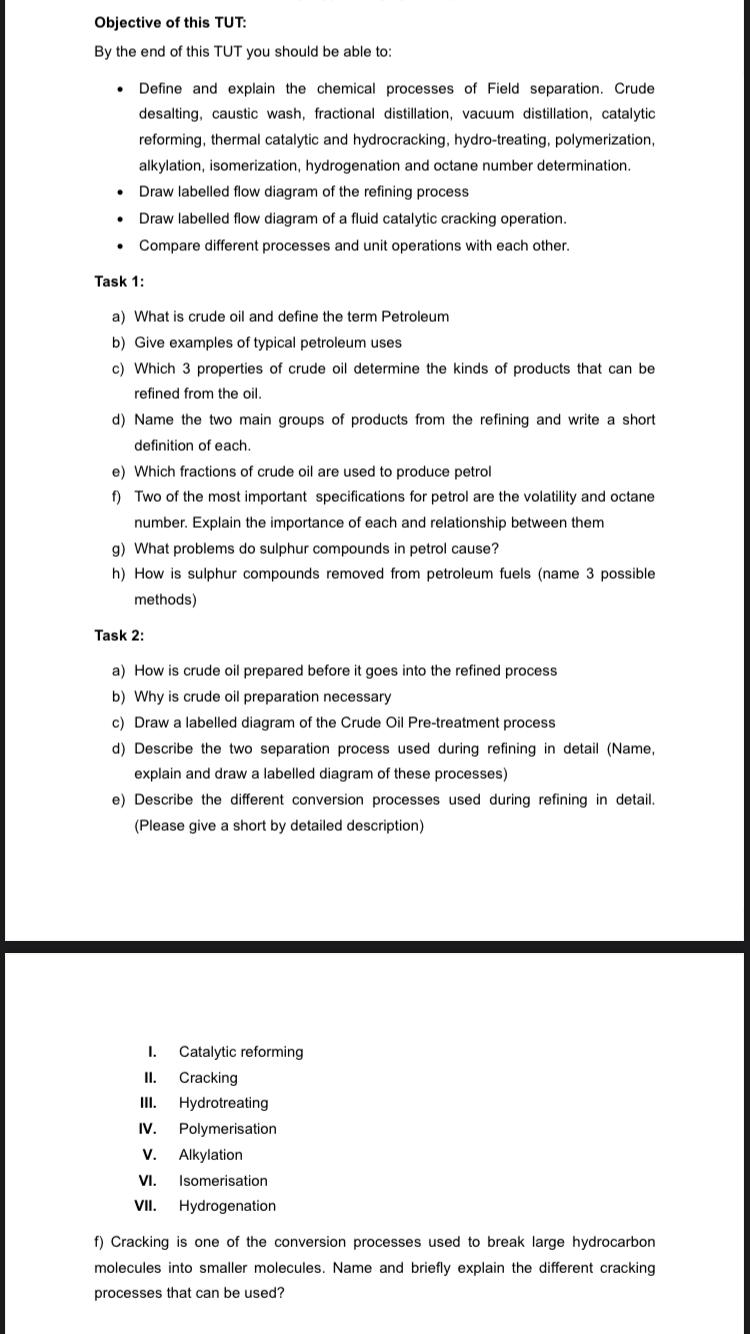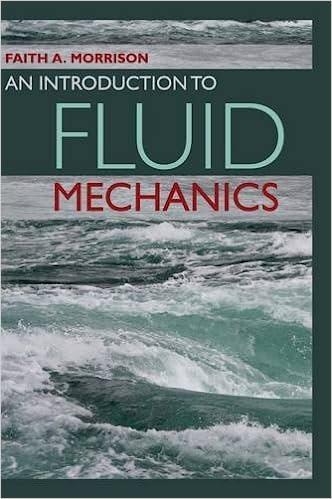Answered step by step
Verified Expert Solution
Question
1 Approved Answer
Objective of this TUT: By the end of this TUT you should be able to: Define and explain the chemical processes of Field separation. Crude
Objective of this TUT:
By the end of this TUT you should be able to:
Define and explain the chemical processes of Field separation. Crude
desalting, caustic wash, fractional distillation, vacuum distillation, catalytic
reforming, thermal catalytic and hydrocracking, hydrotreating, polymerization,
alkylation, isomerization, hydrogenation and octane number determination.
Draw labelled flow diagram of the refining process
Draw labelled flow diagram of a fluid catalytic cracking operation.
Compare different processes and unit operations with each other.
Task :
a What is crude oil and define the term Petroleum
b Give examples of typical petroleum uses
c Which properties of crude oil determine the kinds of products that can be
refined from the oil.
d Name the two main groups of products from the refining and write a short
definition of each.
e Which fractions of crude oil are used to produce petrol
f Two of the most important specifications for petrol are the volatility and octane
number. Explain the importance of each and relationship between them
g What problems do sulphur compounds in petrol cause?
h How is sulphur compounds removed from petroleum fuels name possible
methods
Task :
a How is crude oil prepared before it goes into the refined process
b Why is crude oil preparation necessary
c Draw a labelled diagram of the Crude Oil Pretreatment process
d Describe the two separation process used during refining in detail Name
explain and draw a labelled diagram of these processes
e Describe the different conversion processes used during refining in detail.
Please give a short by detailed description
I. Catalytic reforming
II Cracking
III. Hydrotreating
IV Polymerisation
V Alkylation
VI Isomerisation
VII. Hydrogenation
f Cracking is one of the conversion processes used to break large hydrocarbon
molecules into smaller molecules. Name and briefly explain the different cracking
processes that can be used?

Step by Step Solution
There are 3 Steps involved in it
Step: 1

Get Instant Access to Expert-Tailored Solutions
See step-by-step solutions with expert insights and AI powered tools for academic success
Step: 2

Step: 3

Ace Your Homework with AI
Get the answers you need in no time with our AI-driven, step-by-step assistance
Get Started


